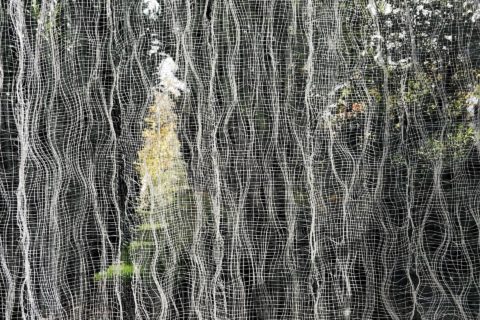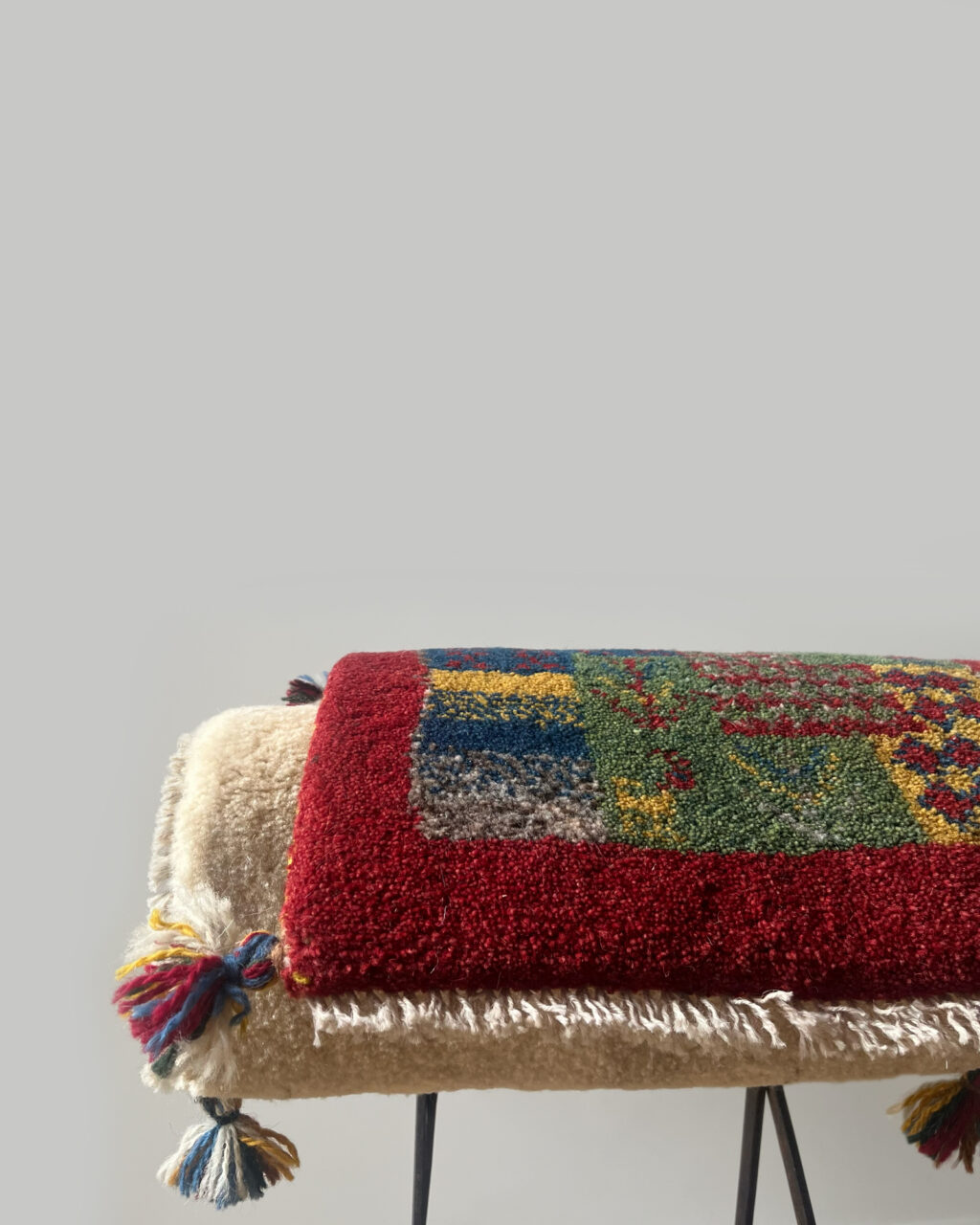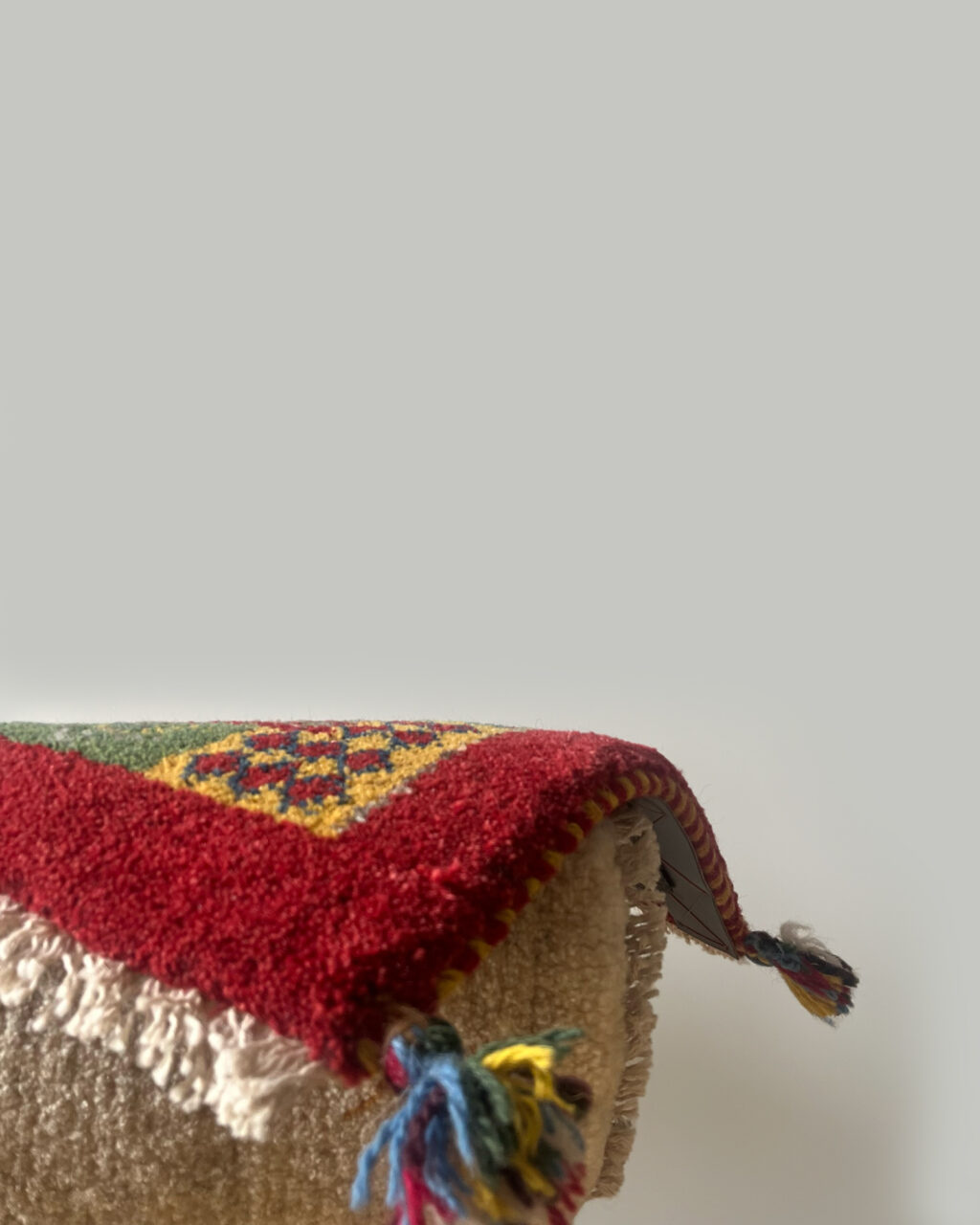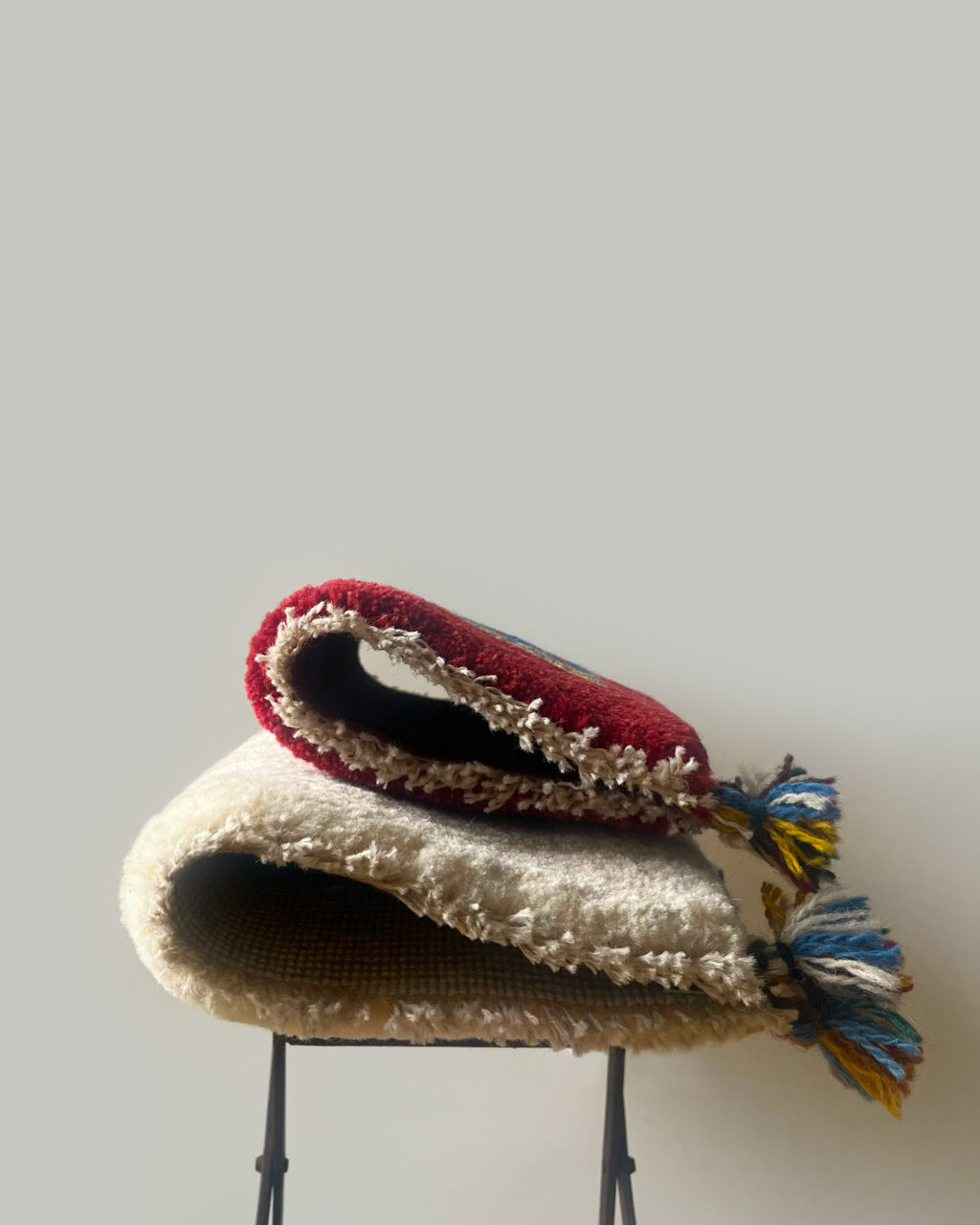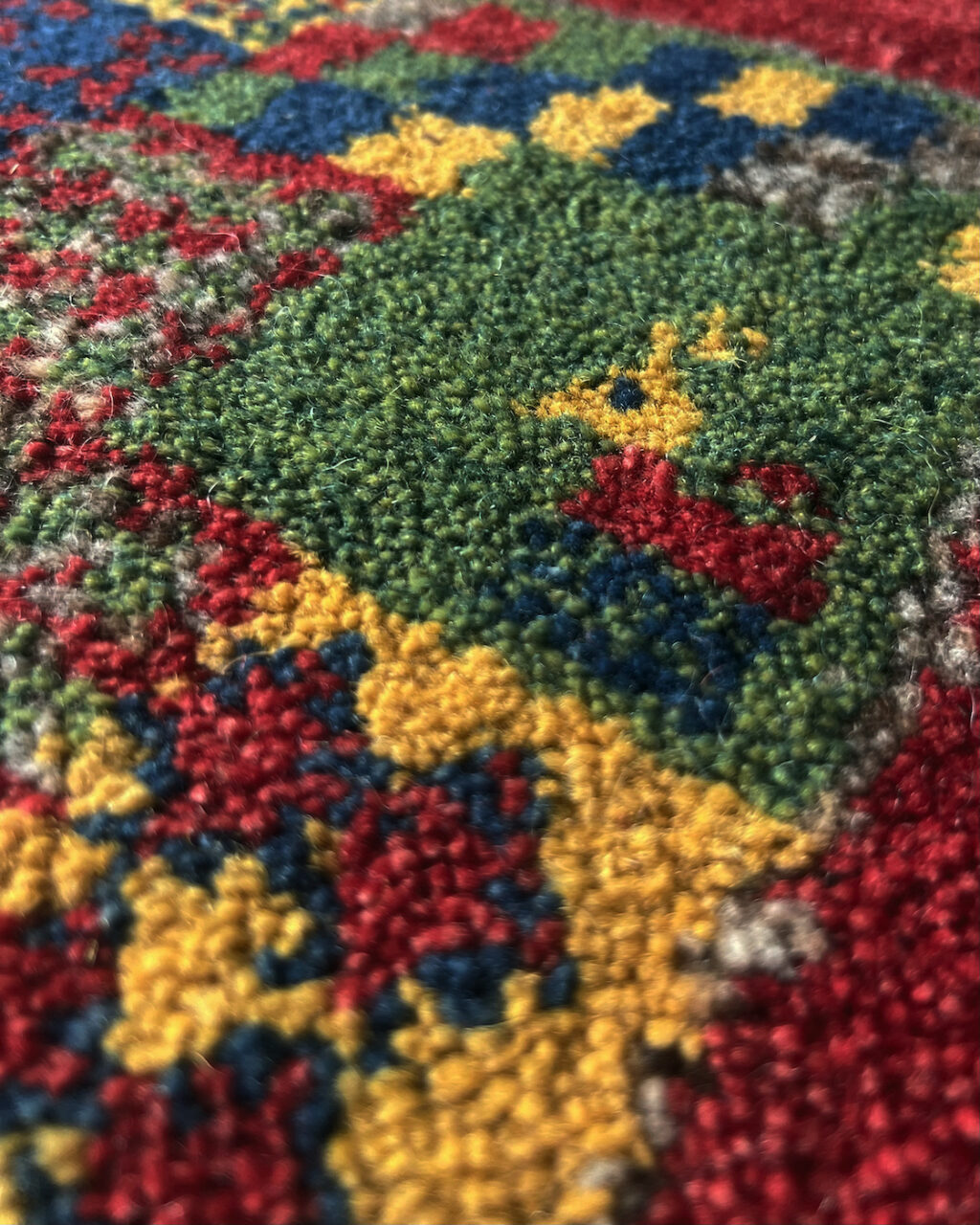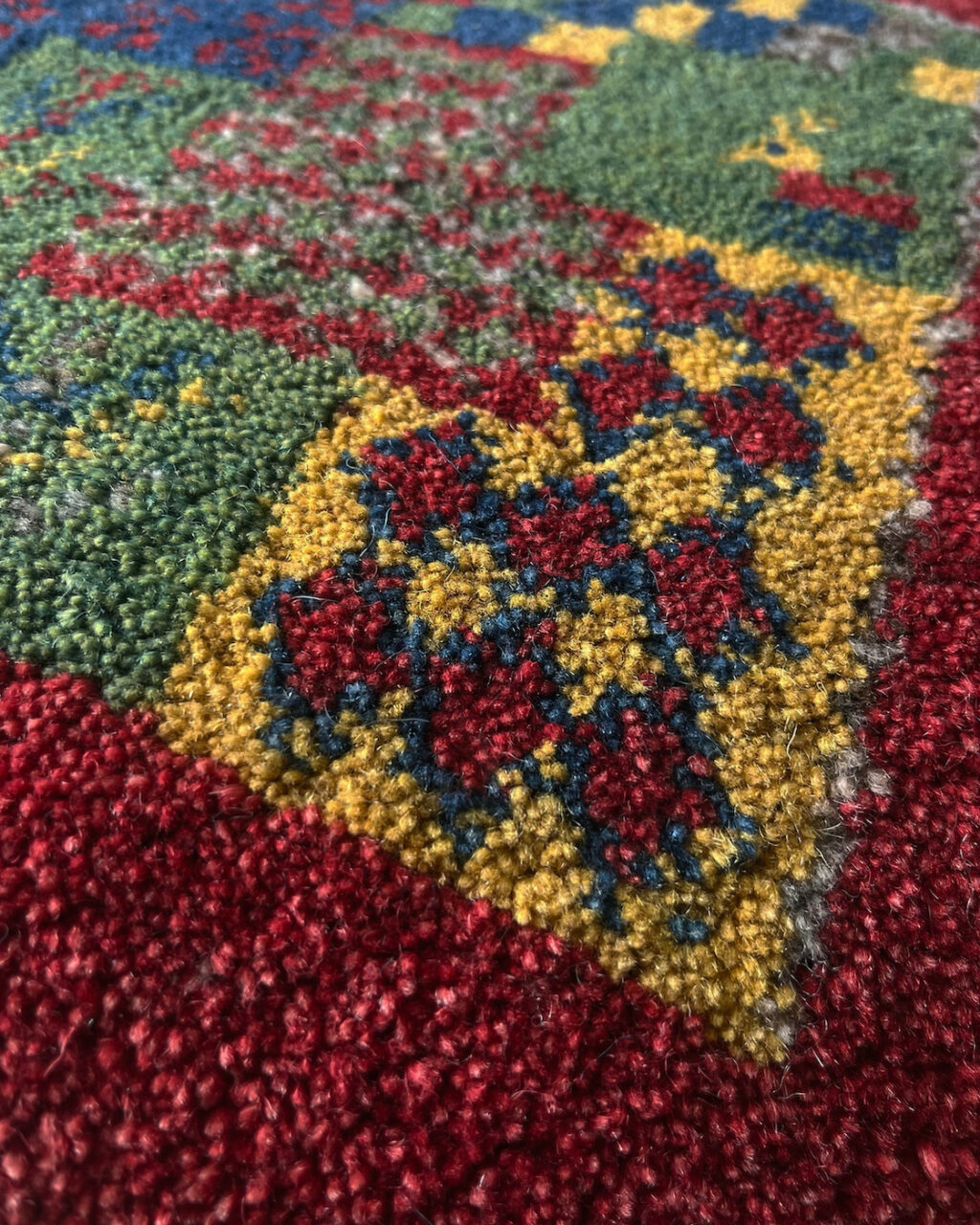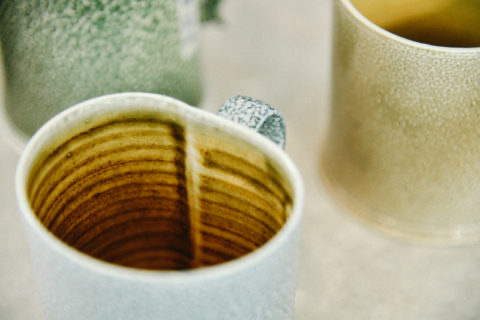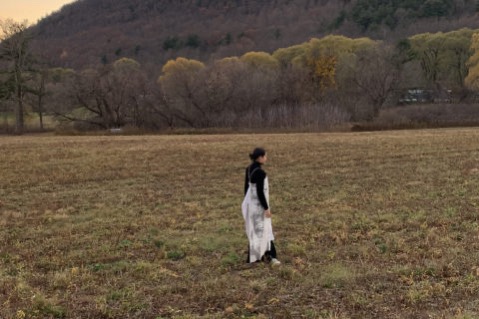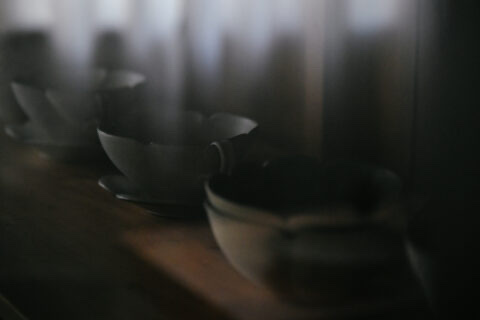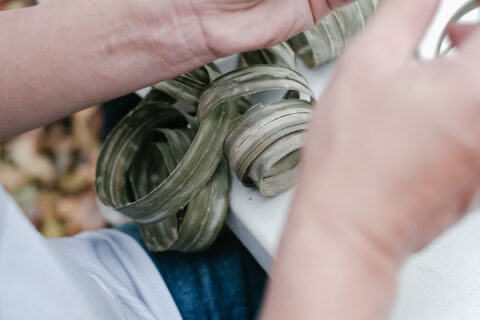購入時是七月正熱,心想像著有它在屋子裡的溫暖冬日,譬如光著的腳很不情願從沙發下來時能被它溫柔接住,屬提前準備而生的期待感,便立即被告知羊群們早習慣高原的嚴峻氣候,身上的毛本來就擁有調濕能力,用這些羊毛編成的地毯會冬暖夏涼,全年無休地根本無需換季。我訝異翻著疊成山高的地毯,也感慨羊的適應力,人也有這種功能嗎?
In the midst of July’s heat, I made the purchase, envisioning the cozy warmth it would bring to the house during winter. I imagined how it would tenderly cradle my feet when I reluctantly stepped off the couch. A feeling of anticipation stemmed from this early preparation. However, my excitement was quickly tempered by the revelation that the sheep were already acclimated to the harsh climate of the highlands, and their wool possessed innate moisture-regulating properties. These woolen carpets, woven from their fibers, would provide warmth in winter and coolness in summer, making them suitable for year-round use. As I flipped through the carpet that stacked like towering mountains, I couldn’t help but be amazed by the adaptability of the sheep. It made me wonder, do humans possess such inherent capabilities too?
這種地毯叫Gabbeh,波斯語的意思是原始、自然、未經雕琢。事實卻不然,製作過程可繁複了。
它是伊朗遊牧民族的傳統手藝,族民長年與羊群共生、遷徙、務農,地毯上的圖案沒有固定樣式,通常由女性製作,她們會把眼前的土地、動物、四季交替的幻變景貌編織成一幅幅遊牧見證。偶爾也會出現波斯神話故事為靈感的創作。色澤繽紛到會迷失在各種圖案與花色間,每幅都自成一格,根本是喜好分明的選擇題。
This particular kind of carpet is known as Gabbeh, derived from the Persian language, meaning primitive, natural, and unadorned. However, the truth differs from the name, as the process of creating these carpets can be extremely intricate.
The creation of Gabbeh carpets is a tradition among the nomadic tribes of Iran, who have woven their lives together with sheep while migrating and farming for countless generations. These carpets feature patterns that defy fixed designs and are predominantly woven by women who skillfully incorporate the vast landscapes, animals, and ever-changing seasons into their tapestries that serve as a testament to their nomadic existence. At times, the women draw inspiration from Persian mythological stories to create their designs. Their work exhibits an array of colors and a myriad of patterns and motifs that can captivate anyone. Each piece has its own unique style, making it a matter of distinct personal preference.
製程先是剪羊毛、紡紗,為了鬆開纖維,用手與工具梳理。同時採集當地野生植物、塊莖、樹皮、花朵製成天然染料,為羊毛上色。用織布機編織,此項完全沒有模板,只能靠經驗與手藝加持。完成編織後,會用火微微烘烤地毯底部,去除多餘的毛頭。然後移動至清洗區,用大量水沖刷、用工具去除污垢。地毯洗淨後會鋪在乾燥的土地上在日光下自然風乾,毛線因為已歷經反覆染色,即使被陽光直射也不易褪色。風乾後作最後修剪,圖案變得清晰才能說一聲「無事終了」啊。
據說這樣製作出來的地毯,色彩一百年也不褪。當地人在結婚、生小孩以至各種人生大事都會編織Gabbeh,讓它承載著祝福送給親愛的人,有些圖案更有驅逐邪惡的意味。如果有天,收到了Gabbeh作禮物,你便能知道,這個祝福有多麼的巨大。
The process begins with the shearing of sheep and the subsequent spinning of their wool. The wool is combed by hand and with tools to loosen the fibers. Simultaneously, the weavers gather local wild plants, tubers, bark, and flowers to create natural dyes for coloring the wool. Weaving takes place on a loom, without the use of templates, relying solely on the weavers’ expertise and craftsmanship. Once the weaving is complete, the underside of the carpet is lightly dried over fire to remove any excess wool. The carpet is then moved to a cleaning area where it undergoes thorough washing with plenty of water and various tools to remove dirt. After the cleaning process, the carpet is laid out on dry ground, allowing it to naturally air dry under the sunlight. Owing to the repeated dyeing process, the yarn is resistant to fading, even when exposed to direct sunlight. Once the carpet is fully dried, the final trimming is performed, ensuring the patterns are distinct and precise.
It is widely believed that carpets crafted in this manner retain their vivid colors even after a century has passed. The local community weaves Gabbeh to commemorate weddings, childbirth, and other momentous life events, presenting them as cherished blessings to their beloved ones. Certain patterns bear symbolic meanings, serving as protective talismans against evil forces. If you were ever to receive a Gabbeh as a gift, you would grasp the immense blessings it carries within.
